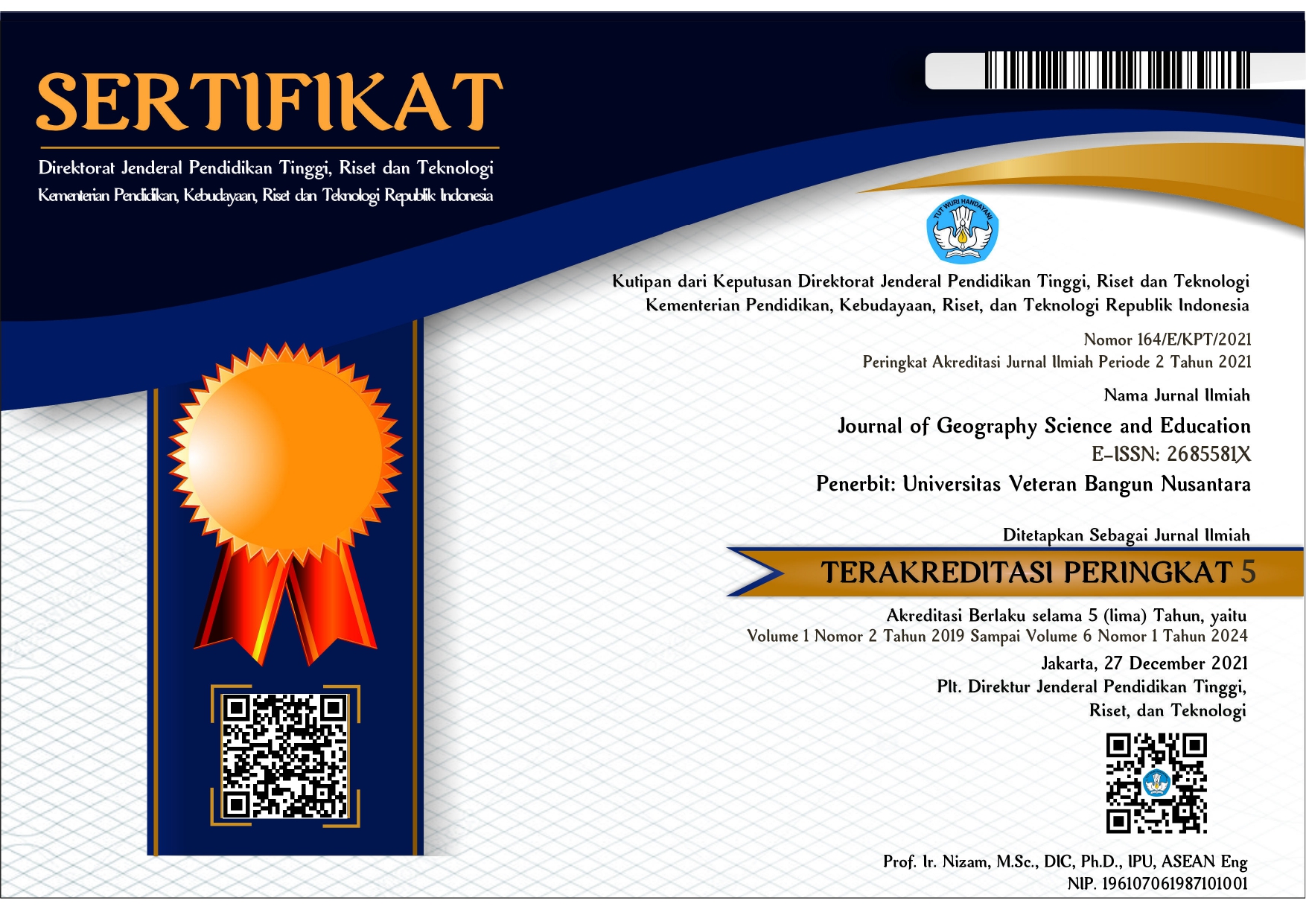Submissions
Submission Preparation Checklist
As part of the submission process, authors are required to check off their submission's compliance with all of the following items, and submissions may be returned to authors that do not adhere to these guidelines.- Penyerahan belum diterbitkan sebelumnya, atau sedang dalam pertimbangan jurnal lain (atau sebuah penjelasan belum disediakan dalam komentar kepada editor).
- File naskah dalam format file dokumen OpenOffice, Microsoft Word, RTF, atau WordPerfect.
- Ketika tersedia, URLs untuk referensi telah disediakan.
- Teks 1 spasi; font 12; italic; tidak digaribawahi (kecuali alamat URL); dan semua ilustrasi, figur, dan tabel yang ditempatkan di dalam teks pada poin yang tepat, jangan di akhir.
- Teks yang mematuhi persyaratan mengenai perpustakaan dan gaya bahasa digambarkan secara garis besar di Petunjuk Penulis, yang akan ditemukan dalam halaman Tentang Kami.
- Jika penerimaan untuk bagian peer-review dari jurnal, instruksinya terdapat di Memastikan Reviewer Anonim telah diikuti.
Copyright Notice
Copyright Notice
The copyright to this article is transferred to JGSE: Journal of Geography Science and Education if and when the article is accepted for publication under Creative Commons Attribution-ShareAlike 4.0 International License. The undersigned hereby transfers any and all rights in and to the paper including without limitation all copyrights to JGSE: Journal of Geography Science and Education. The undersigned hereby represents and warrants that the paper is original and that he/she is the author of the paper, except for material that is clearly identified as to its original source, with permission notices from the copyright owners where required. The undersigned represents that he/she has the power and authority to make and execute this assignment.
We declare that:
- This paper has not been published in the same form elsewhere.
- It will not be submitted anywhere else for publication prior to acceptance/rejection by this Journal.
- A copyright permission is obtained for materials published elsewhere and which require this permission for reproduction.
Furthermore, I/We hereby transfer the unlimited rights of publication of the above mentioned paper in whole to JGSE: Journal of Geography Science and Education. The copyright transfer covers the right to reproduce and distribute the article, including reprints, translations, photographic reproductions, microform, electronic form (offline, online) or any other reproductions of similar nature. The corresponding author signs for and accepts responsibility for releasing this material on behalf of any and all co-authors. After submission of this agreement signed by the corresponding author, changes of authorship or in the order of the authors listed will not be accepted.
Retained Rights/Terms and Conditions
- Authors retain all proprietary rights in any process, procedure, or article of manufacture described in the work.
- Authors may reproduce or authorize others to reproduce the work or derivative works for the author’s personal use or for company use, provided that the source and the JGSE: Journal of Geography Science and Education copyright notice are indicated, the copies are not used in any way that implies JGSE: Journal of Geography Science and Education endorsement of a product or service of any employer, and the copies themselves are not offered for sale.
- Although authors are permitted to re-use all or portions of the work in other works, this does not include granting third-party requests for reprinting, republishing, or other types of re-use.
Privacy Statement
The names and email addresses used in this journal are for the purposes of this journal only and shall not be used for any other purpose or by any other person.









